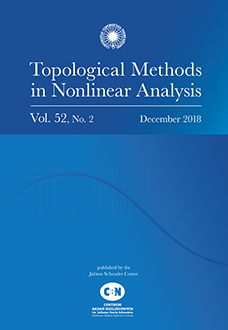Abstract
Given $\varepsilon> 0$ and a bounded Lipschitz domain $\Omega$ in $\mathbb R^M\times \mathbb R^N$ let $\Omega_\varepsilon:=\{(x,\varepsilon y)\mid (x,y)\in \Omega\}$ be the $\varepsilon$-squeezed domain. Consider the reaction-diffusion equation $$ u_t = \Delta u + f(u) \leqno(\widetilde E_\varepsilon) $$ on $\Omega_\varepsilon$ with Neumann boundary condition. Here $f$ is an appropriate nonlinearity such that $(\widetilde E_\varepsilon)$ generates a (local) semiflow $\widetilde\pi_ \varepsilon$ on $H^1(\Omega_\varepsilon)$. It was proved by Prizzi and Rybakowski (J. Differential Equations, to appear), generalizing some previous results of Hale and Raugel, that there are a closed subspace $H^1_s(\Omega)$ of $H^1(\Omega)$, a closed subspace $L^2_s(\Omega)$ of $L^2(\Omega)$ and a sectorial operator $A_0$ on $L^2_s(\Omega)$ such that the semiflow $\pi_0$ defined on $H^1_s(\Omega)$ by the abstract equation $$\dot u+A_0u=\widehat f(u)$$ is the limit of the semiflows $\widetilde\pi_\varepsilon$ as $\varepsilon\to 0^+$.
In this paper we prove a singular Conley index continuation principle stating that every isolated invariant set $K_0$ of $\pi_0$ can be continued to a nearby family $\widetilde K_\varepsilon$ of isolated invariant sets of $\widetilde \pi_\varepsilon$ with the same Conley index. We present various applications of this result to problems like connection lifting or resonance bifurcation.
Citation
Maria C. Carbinatto. Krzysztof P. Rybakowski. "Conley index continuation and thin domain problems." Topol. Methods Nonlinear Anal. 16 (2) 201 - 251, 2000.
Information





